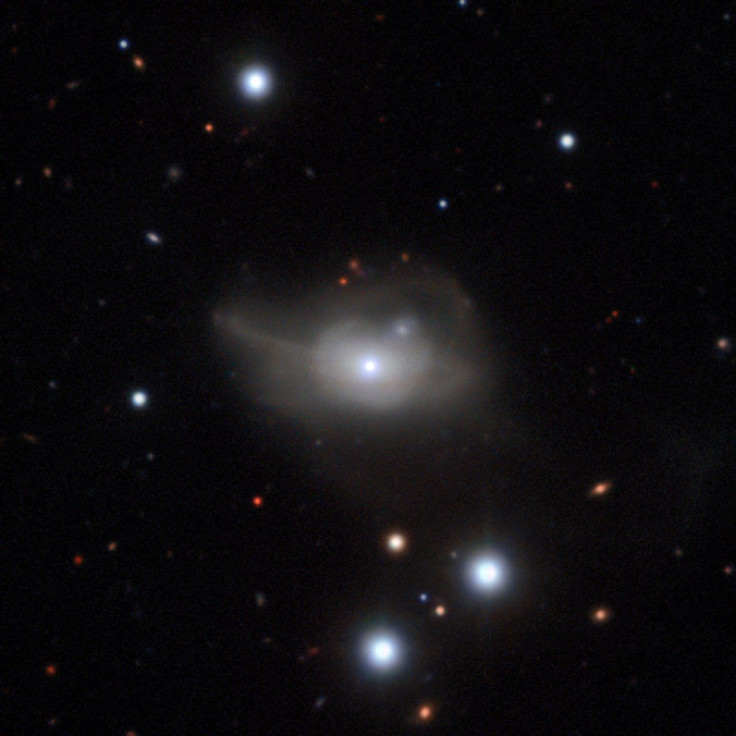Black Holes’ Tug Of War Pushed A Bright Galaxy Into The Shadows

Getting caught in the immense gravitational pull of a black hole is bad enough to ruin your day — regardless of whether you are a planet, a star, or an entire galaxy. Throw another black hole in to the mix, and what you get is utter chaos, one that is sure to bring about the utter annihilation of whatever happens to be in the vicinity.
It is possible that this is exactly what is happening with Markarian 1018 — a galaxy located 555 million light-years from Earth in the Cetus constellation.
The galaxy, which has been extensively observed using the European Southern Observatory’s Very Large Telescope, the Hubble Space Telescope and NASA’s Chandra X-ray Observatory, is exhibiting behavior that defies our understanding of how galaxies like Markarian 1018 should behave.
Normally, an “active” galaxy — one that has a supermassive black hole at its centre — shines very brightly. This is because hot material glows fiercely as it accretes around a black hole’s event horizon. As this light can show wide variation across different active galaxies, astronomers use the properties of the light emitted to classify galaxies into different categories.
When Markarian 1018 — originally a relatively dim galaxy — was observed shining brightly in the 1980s, scientists categorized it as a Type I Seyfert — galaxies that are very bright sources of X-rays, as well as ultraviolet and visible light. However, when scientists trained their sights on the galaxy in 2015, they found that it had all but returned to the shadows.
“We were stunned to see such a rare and dramatic change in Markarian 1018,” Rebecca McElroy, a PhD student at the University of Sydney and lead author of one of the two studies detailing the findings, said in a statement. “It’s possible that this starvation is because the inflow of fuel is being disrupted. An intriguing possibility is that this could be due to interactions with a second supermassive black hole.”
So where did the second black hole come from?
Scientists believe that sometime in the not-so-distant past, Markarian 1018 began merging with another active galaxy. When this happened, the supermassive black hole at the centre of the second galaxy began disrupting the first one’s feeding frenzy, thereby preventing accretion — which is what made Markarian 1018 shine brightly in the first place.
“We were lucky that we detected the event just 3-4 years after the decline started so we could begin monitoring campaigns to study details of the accretion physics of active galaxies that cannot be studied otherwise,” Bernd Husemann, project leader at the Close AGN Reference Survey and the lead author of the second study, said in the statement.
© Copyright IBTimes 2024. All rights reserved.






















